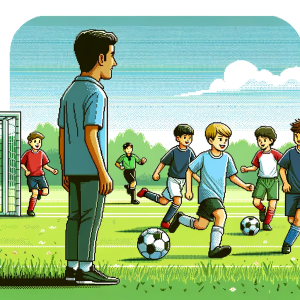
How Speed Shapes Women’s Soccer Success
Imagine this: you’re coaching a women’s soccer team in the Spanish First Division. It’s game day, and every sprint, every dash counts. Now, picture two players—one darting down the wing at lightning speed, outpacing the defense, and another controlling the center, moving with intensity but less explosiveness. What’s the difference? And how could understanding their speed profiles help improve their performance?
This isn’t just theoretical. A recent study delves into the very high-speed running (VHSR) of elite women soccer players, focusing on the distinct demands placed on different positions during a match. Understanding these patterns can make all the difference in tailoring training, enhancing player endurance, and, ultimately, elevating team success.
The Speed Profiles of Soccer Positions: Wing vs. Center
Researchers observed 15 players across 23 Spanish First Division matches, using GPS tracking to measure speed, distance, and recovery. The players were divided into two groups based on their positions: those covering the lateral corridors of the field (LCP) and those in the central corridor (CCP). Lateral players—wingers and wide forwards—were expected to cover the field with bursts of speed, while central players, like midfielders and center-backs, needed consistent but less explosive movement.
Key Finding: Wing players (LCPs) ran at very high speeds more often and with shorter recovery times than their central counterparts (CCPs). They were also faster overall, reaching higher maximum speeds across various distance bands. For example, wing players averaged about 600 meters of very high-speed running per game, nearly twice the distance covered by central players, who logged around 300 meters.
This information is invaluable for coaches. Training a wing player to reach these high speeds and sustain them under match conditions could significantly impact game outcomes. Conversely, central players benefit more from endurance-focused routines, given their position’s demands for stability and control.
Why Speed Matters: Building the Competitive Edge
Speed in soccer isn’t just about running fast—it’s about when, how, and for how long a player can sustain that intensity. For LCPs, speed equals opportunity. When a player can sprint into open space on the wing, it creates scoring chances, drawing defenders and opening pathways for teammates. However, maintaining such speed requires stamina, skillful recovery, and intentional training.
The study showed that wing players also excelled in short, explosive runs—most VHSR efforts were between 10 and 20 meters, with minimal recovery. These repeated bursts allow wing players to drive the ball forward, pull defenders out of position, or rapidly switch between offense and defense. Meanwhile, central players held the fort, using their endurance to regulate play and support all areas of the field.
Story Spotlight: Think of legendary players renowned for their speed and agility on the wing—like Megan Rapinoe or Tobin Heath. Their knack for sudden bursts allows them to capitalize on even brief lapses in the opposing defense. This study helps explain the science behind such movement patterns, proving that top-tier players not only need speed but also endurance to sustain repeated high-speed runs.
Training for Very High-Speed Running
Armed with these insights, coaches can design better training sessions that reflect real-game demands. If you’re a coach, think about a few training tweaks:
- For Wing Players (LCPs): Work on interval sprints to build speed endurance. Set drills where they sprint 10–20 meters with minimal rest, simulating game-like conditions. Since these players require peak speed in shorter bursts, focus on agility exercises and short sprints, preparing them to pivot or reverse directions quickly.
- For Central Players (CCPs): Implement endurance drills that emphasize consistent movement with longer recovery times. Use intervals that require moderate-speed runs followed by rest, mimicking their steadier, more regulated game pace. Practicing short sprints with recovery breaks also prepares them for occasional high-speed situations without exhausting their energy reserves.
Incorporating these training methods could mean the difference between a player who lags after their first few sprints and one who dominates the field throughout the game.
The Science Behind Recovery Times
Recovery time is critical, as it allows players to recharge between high-speed efforts. This study found that central players had longer recovery times—averaging about five minutes between high-speed bursts. Meanwhile, wing players often had only three minutes to rest before their next sprint. This difference emphasizes how each player must balance exertion and recovery to stay effective throughout the match.
Building stamina is crucial for central players to endure fewer but longer bursts. In contrast, wing players benefit from exercises that help them recover quickly and get back into the game. Coaches can implement specific cooldown techniques and hydration strategies tailored to each position’s needs, ensuring players can handle the speed requirements unique to their roles.
Real-World Applications for Coaches and Players
The implications of this research extend beyond training. Knowing the physical demands of each position allows coaches to make strategic substitutions, manage player rotations, and even modify playstyles to exploit opponent weaknesses. If a team lacks fast wing players, they might focus on controlling the center and limiting the number of wide sprints required. Alternatively, if a team has a speedy winger, they could set up counterattacks that play to that strength, catching opponents off guard.



